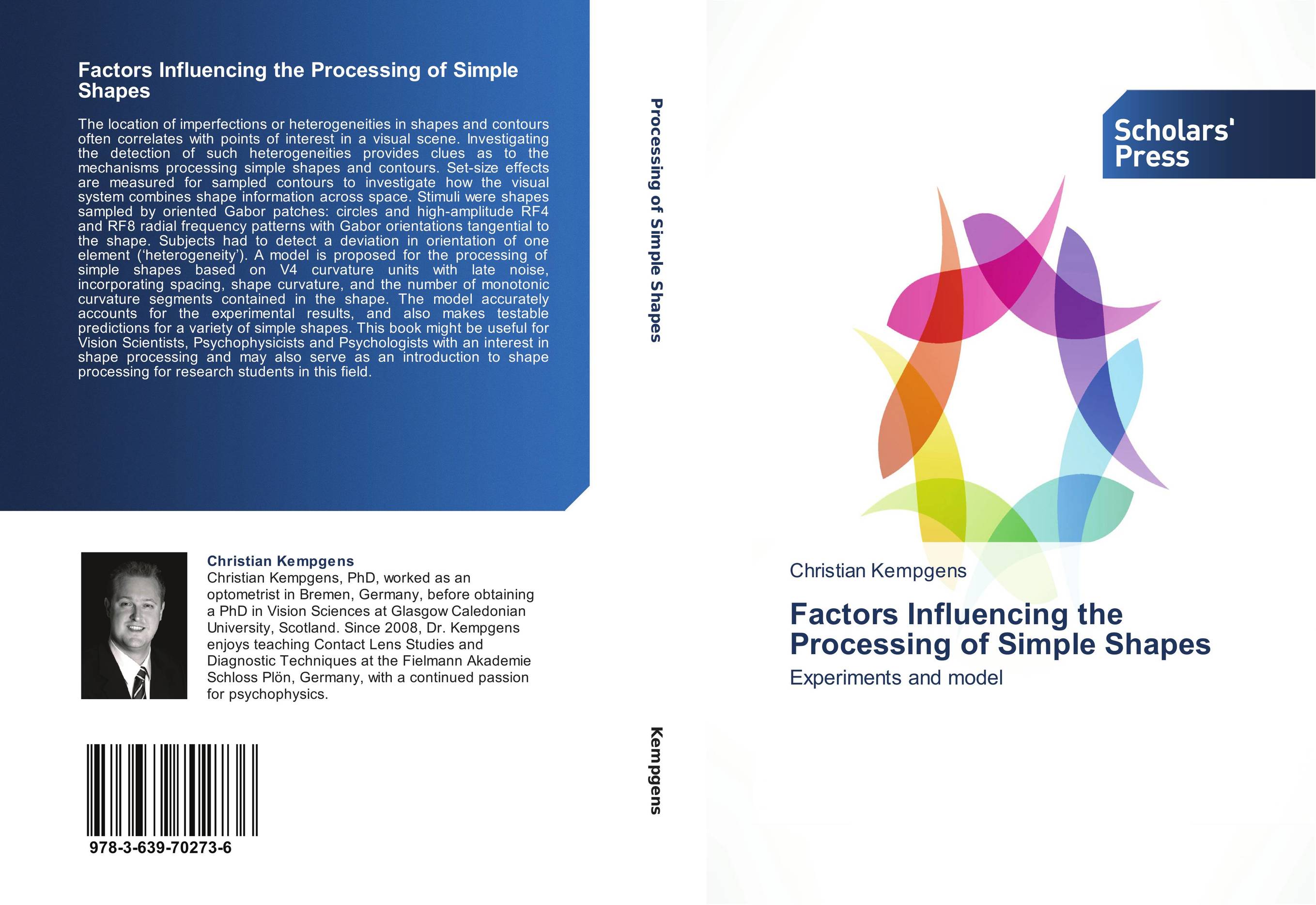| Поиск по каталогу |
|
(строгое соответствие)
|
- Профессиональная
- Научно-популярная
- Художественная
- Публицистика
- Детская
- Искусство
- Хобби, семья, дом
- Спорт
- Путеводители
- Блокноты, тетради, открытки
Factors Influencing the Processing of Simple Shapes. Experiments and model

В наличии
| Местонахождение: Алматы | Состояние экземпляра: новый |

Бумажная
версия
версия
Автор: Christian Kempgens
ISBN: 9783639702736
Год издания: 2014
Формат книги: 60×90/16 (145×215 мм)
Количество страниц: 408
Издательство: Scholars' Press
Цена: 71869 тг
Положить в корзину
| Способы доставки в город Алматы * комплектация (срок до отгрузки) не более 2 рабочих дней |
| Самовывоз из города Алматы (пункты самовывоза партнёра CDEK) |
| Курьерская доставка CDEK из города Москва |
| Доставка Почтой России из города Москва |
Аннотация: The location of imperfections or heterogeneities in shapes and contours often correlates with points of interest in a visual scene. Investigating the detection of such heterogeneities provides clues as to the mechanisms processing simple shapes and contours. Set-size effects are measured for sampled contours to investigate how the visual system combines shape information across space. Stimuli were shapes sampled by oriented Gabor patches: circles and high-amplitude RF4 and RF8 radial frequency patterns with Gabor orientations tangential to the shape. Subjects had to detect a deviation in orientation of one element (‘heterogeneity’). A model is proposed for the processing of simple shapes based on V4 curvature units with late noise, incorporating spacing, shape curvature, and the number of monotonic curvature segments contained in the shape. The model accurately accounts for the experimental results, and also makes testable predictions for a variety of simple shapes. This book might be useful for Vision Scientists, Psychophysicists and Psychologists with an interest in shape processing and may also serve as an introduction to shape processing for research students in this field.
Ключевые слова: sampled shapes, shape perception, shape model, set-size effect, visual search, orientation discrimination, heterogeneity detection, radial frequency patterns



